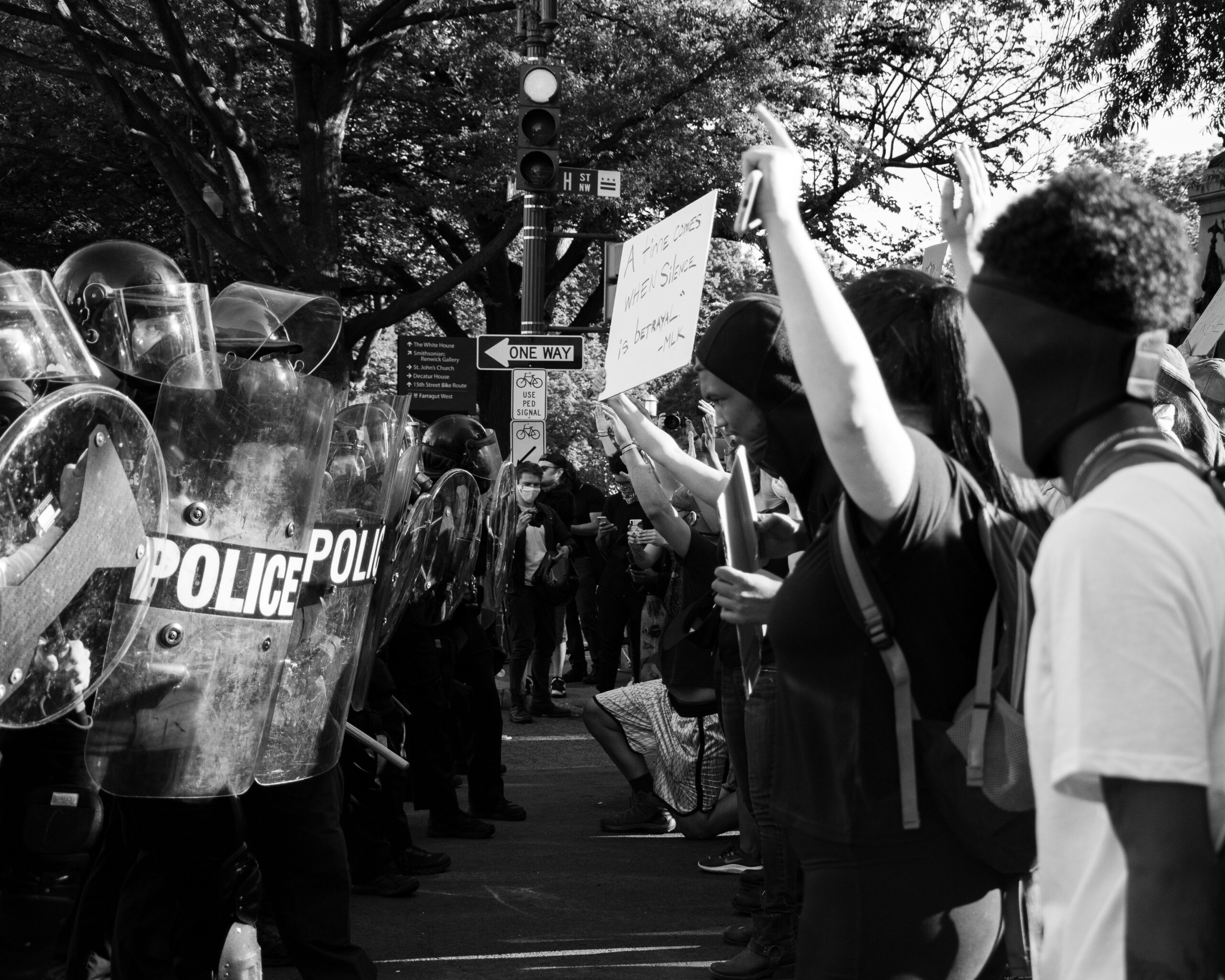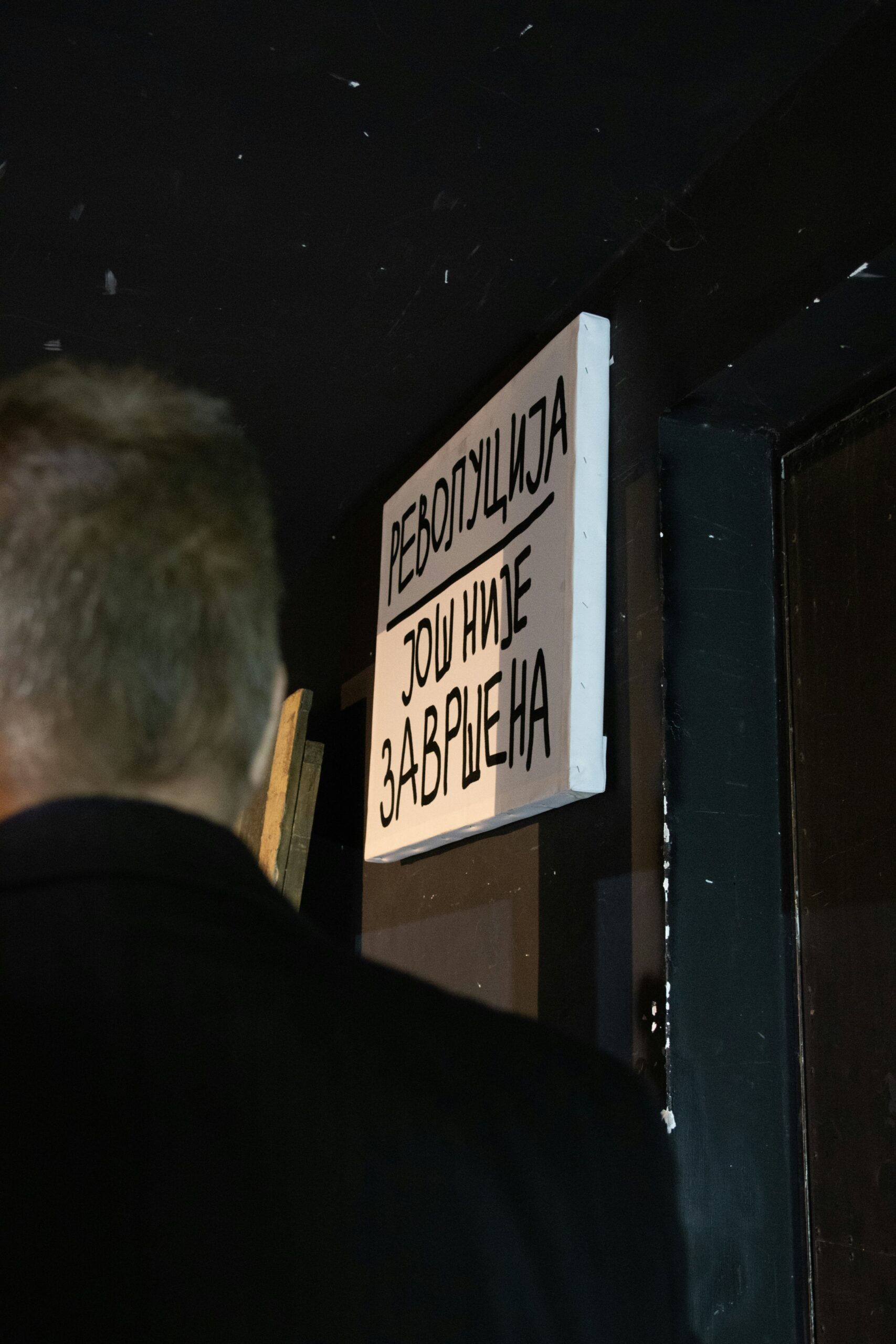Introduction to the Incident
On October 15, 2023, a significant incident occurred in central London that has garnered widespread attention. During an anti-fascism protest, an individual participating in the demonstration was assaulted, leading to the immediate arrest of two men. The protest, organized to oppose rising fascist sentiments in the region, saw a considerable turnout of demonstrators advocating for equality and justice.
The assault took place in the early afternoon near Trafalgar Square, a notable location often associated with public gatherings and demonstrations. Eyewitnesses reported that the assailants targeted the protester, who was peacefully voicing his stance against fascism. The swift and violent nature of the attack shocked onlookers, prompting immediate intervention from nearby law enforcement officers.
Following the incident, the Metropolitan Police acted promptly, detaining the two suspects at the scene. The rapid response from the authorities was met with approval from the public, who expressed concerns over the escalation of violence during peaceful protests. The injured protester received medical attention on-site before being transported to a nearby hospital for further evaluation.
The assault has sparked a broader discussion on the safety and rights of individuals participating in demonstrations. Public reaction has been one of outrage and solidarity, with many calling for increased measures to protect peaceful protesters from such acts of aggression. Authorities have assured the public that a thorough investigation will be conducted to understand the motives behind the attack and to ensure justice is served.
As the investigation unfolds, the incident underscores the ongoing tensions surrounding protests and the crucial need for maintaining peace and order during such events. The community’s response highlights a collective commitment to safeguarding democratic principles and standing against acts of violence and intimidation.
Details of the Assault
The incident occurred during a peaceful anti-fascism protest in central London. According to eyewitnesses, the atmosphere was initially calm, with protesters chanting slogans and holding placards. However, tensions escalated rapidly when two men, described by onlookers as wearing dark clothing and behaving aggressively, confronted a lone protester.
Eyewitnesses report that the assailants shouted obscenities before launching a physical attack on the protester, who was identified as a local activist. “It was shocking how quickly things turned violent,” said Jane Doe, a fellow protester who witnessed the assault. “One moment we were all chanting, and the next, these two men were hitting him relentlessly.”
The nature of the injuries sustained by the victim was severe. Medical personnel on the scene provided immediate first aid before the protester was transported to a nearby hospital. Reports indicate that the victim suffered multiple contusions and a possible concussion. “He was bleeding from the head and barely conscious,” described John Smith, another witness. “It was clear he needed urgent medical attention.”
Police officers were quick to respond, arriving at the scene within minutes of the altercation. They managed to apprehend the two men responsible for the assault. Authorities have stated that the suspects are currently under investigation, and they are seeking additional witnesses to provide further details on the incident.
Witnesses have been urged to come forward with any information that could aid the investigation. “We want to ensure justice is served,” said a police spokesperson. “Any piece of information, no matter how small, could be crucial in understanding what happened and holding the perpetrators accountable.”
Identification and Arrest of the Suspects
Following the assault on an anti-fascism protester, the UK police swiftly launched an investigation to identify and apprehend the suspects involved. The initial breakthrough came from extensive analysis of CCTV footage captured in the area at the time of the incident. The surveillance cameras provided crucial visual evidence, allowing law enforcement to pinpoint the exact movements and appearances of the individuals in question.
In addition to the CCTV evidence, witness testimonies played a significant role in the identification process. Eyewitnesses who were present during the protest provided detailed descriptions of the suspects, corroborating the visual data obtained from the footage. The combination of these sources enabled the police to create accurate profiles of the individuals responsible for the assault.
Social media also emerged as a pivotal tool in the investigation. Several posts and videos shared by bystanders on platforms such as Twitter and Facebook offered additional perspectives on the event. These digital traces not only supplemented the existing evidence but also helped in tracking the suspects’ online activities, further solidifying their identification.
With a robust body of evidence comprising CCTV footage, eyewitness accounts, and social media posts, the police moved swiftly to apprehend the suspects. The two men were arrested within days of the incident, ensuring a prompt response to the assault. They are currently facing charges of aggravated assault and public disorder, reflecting the severity of their actions against the anti-fascism protester.
This multifaceted approach to identification and arrest underscores the importance of leveraging diverse sources of evidence in modern policing. By integrating traditional investigative methods with digital tools, law enforcement agencies can enhance their efficiency and effectiveness in addressing and resolving criminal activities.
Response from Law Enforcement
In the aftermath of the assault on an anti-fascism protester, the UK police were prompt in their response, ensuring both public safety and transparency in their actions. Law enforcement officials released a statement shortly after the incident, expressing their commitment to a thorough investigation. The statement emphasized the importance of maintaining public order and the rule of law, reassuring the community that such acts of violence would not be tolerated.
In a press release, the police detailed their immediate actions, including the arrest of two men suspected of being involved in the assault. The suspects were taken into custody and questioned by investigators. The police also appealed to witnesses and the public for any additional information that could aid in their investigation, highlighting their dedication to gathering all relevant evidence and testimonies.
Public statements were made by senior law enforcement officials, reiterating the police force’s zero-tolerance policy towards violence at protests and public gatherings. They underscored the importance of safeguarding individuals’ rights to peacefully protest while ensuring the safety of all participants. These officials also articulated the measures being taken to prevent similar incidents in the future, including increased police presence at demonstrations and enhanced coordination with event organizers.
In interviews with local media, police representatives outlined the steps being taken to address the underlying tensions that can lead to such confrontations. These steps include community outreach programs, engagement with local leaders, and initiatives aimed at fostering dialogue between opposing groups. By proactively addressing these issues, law enforcement aims to create a safer environment for public expression and reduce the likelihood of violence.
Overall, the response from law enforcement has been comprehensive, emphasizing both immediate action and long-term strategies to prevent future incidents. Their dedication to upholding public safety and justice underscores their role in maintaining societal order and protecting the rights of all citizens.
Public and Media Reaction
The assault on the anti-fascism protester and the subsequent arrests of two men have sparked a significant reaction from both the public and the media. Community leaders, activists, and political figures have voiced their concerns and condemnations, highlighting the broader implications of such violent incidents.
Community leaders have emphasized the need for unity and peaceful dialogue. In a statement, a prominent local councilor called for calm and understanding, urging residents to stand together against hate and violence. Activists have also been vocal in their responses. One leading anti-fascism group organized a peaceful rally, drawing hundreds of participants who marched through the city center, chanting slogans and carrying banners that denounced fascism and violence.
The incident has also ignited a wave of social media activity. Hashtags such as #StandAgainstHate and #JusticeForProtester have trended on various platforms, with users sharing their outrage and calling for justice. These online campaigns have gained traction, with many people sharing personal stories and experiences related to activism and community solidarity.
Political figures have not remained silent either. Several Members of Parliament have issued statements condemning the assault and calling for a thorough investigation. One MP remarked, “Such acts of violence have no place in our society. We must ensure that those responsible are held accountable and that we continue to protect the right to peaceful protest.”
The media has provided extensive coverage of the incident, with news outlets reporting on the initial assault, the arrests, and the subsequent public reactions. Editorials and opinion pieces have discussed the broader context of rising tensions and the importance of safeguarding democratic values. The coverage has helped to amplify the voices of those affected and has kept the issue at the forefront of public discourse.
Overall, the public and media reaction to the assault and arrests highlights a collective demand for justice and a reaffirmation of the principles of peaceful protest and community solidarity.
Impact on Anti-Fascism Movement
The recent assault on an anti-fascism protester and the subsequent arrests of two men have had a significant impact on the anti-fascism movement in the UK. This incident has galvanized activists and supporters, leading to an upsurge in public solidarity with the movement. The violent confrontation has not only drawn widespread media attention but has also prompted a reassessment of protest strategies among anti-fascism groups.
In light of the attack, anti-fascism organizations have been compelled to enhance their security measures during demonstrations. This includes better coordination with local authorities and the implementation of self-defense training for protesters. A spokesperson from a prominent anti-fascism group stated, “Our commitment to combating fascism remains unwavering, but we must also ensure the safety of our members. These events have highlighted the need for vigilance and preparedness.”
Public support for the anti-fascism movement appears to have strengthened following the assault. Social media platforms have seen a surge in posts condemning the violence and expressing solidarity with the affected protester. Numerous public figures and human rights organizations have also voiced their concerns, calling for justice and stricter measures to prevent such incidents in the future. This outpouring of support has provided a morale boost to activists, reinforcing their resolve to continue their efforts against fascism.
Organizational dynamics within the anti-fascism movement are also undergoing changes. The attack has fostered a sense of unity and urgency among different factions, leading to increased collaboration and resource sharing. Activists are now more focused on community outreach and education, aiming to build broader coalitions and raise awareness about the dangers of fascism. A leading activist remarked, “This incident has reminded us of the importance of solidarity and collective action. We are more determined than ever to stand up against hate and intolerance.”
In summary, the assault and arrests have had a profound impact on the anti-fascism movement, driving changes in protest strategies, bolstering public support, and fostering a stronger sense of unity among activists. The movement is adapting and evolving in response to these challenges, reaffirming its commitment to fighting fascism in all its forms.
Legal Proceedings and Potential Outcomes
The legal proceedings against the two men arrested following the assault on an anti-fascism protester have commenced. Both individuals have been formally charged and are currently awaiting their first court appearance, which is scheduled for later this month. They have secured legal representation, with each defendant being represented by separate counsel. The charges they face are serious, including assault causing bodily harm, which could result in substantial penalties if they are found guilty.
Under UK law, the judicial process for assault cases typically involves several stages, beginning with the initial court appearance where charges are formally read, followed by a plea hearing. If the defendants plead not guilty, the case will proceed to trial. During the trial, both the prosecution and the defense will present their evidence and witness testimonies. The judge or jury will then deliberate and reach a verdict based on the presented facts.
In the UK, the sentencing guidelines for assault vary depending on the severity of the offense and the circumstances surrounding it. If convicted of assault causing bodily harm, the defendants could face imprisonment, community service, fines, or a combination of these penalties. The judge will consider factors such as the intent behind the assault, the extent of the injury inflicted, and any previous criminal record of the defendants. Sentences can range from a few months to several years in prison.
Past precedents could influence the outcome of this case. For instance, in previous cases involving protest-related violence, courts have often handed down stringent sentences to deter similar behavior and uphold public order. The judiciary’s approach in such cases underscores the importance of maintaining a balance between lawful protest and preventing violence. As the legal proceedings unfold, these precedents may provide a framework for the court’s decision-making process.
The judicial system in the UK aims to ensure that justice is served while upholding the rights of both the accused and the victims. The outcome of this case will likely hinge on the facts presented in court and the interpretation of the law by the presiding judge. The legal proceedings will be closely monitored by various stakeholders, given the broader social and political implications of the incident.
Conclusion and Reflection
The recent incident in the UK, where two men were arrested following an assault on an anti-fascism protester, underscores significant societal and legal challenges. The right to protest is a cornerstone of democratic society, allowing individuals and groups to express their views and advocate for change. This incident highlights the ongoing struggles faced by anti-fascism movements, which are often met with hostility and violence.
Law enforcement agencies play a crucial role in maintaining public safety and order during protests. Their responsibility includes not only managing the crowds but also ensuring that the rights of protesters are protected. In this case, the swift action taken by the police to arrest the assailants demonstrates a commitment to upholding the law and safeguarding citizens’ rights. However, this incident also serves as a reminder that more needs to be done to prevent violence at protests.
One of the key steps towards preventing such incidents in the future is fostering a culture of tolerance and understanding. Education and awareness programs can help mitigate the hostilities that often arise during protests. Additionally, law enforcement training focused on de-escalation techniques and the protection of civil liberties can further enhance the safety of all parties involved.
Moreover, it is essential to address the root causes of the tensions that lead to such violent encounters. Open dialogue and community engagement can help bridge the gaps between opposing groups and reduce the likelihood of conflicts. Policymakers and community leaders must work together to create environments where differing opinions can be expressed peacefully and constructively.
In conclusion, while the arrest of the two men involved in the assault is a step in the right direction, it is imperative to continue striving for a society where the right to protest is respected and protected. By promoting tolerance, enhancing law enforcement training, and addressing underlying societal issues, we can work towards preventing similar incidents in the future and ensuring that anti-fascism movements can advocate for their cause without fear of violence.


